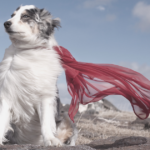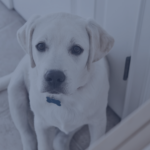The Academy’s director Jean Donaldson speaks with staffer Kristi Benson about management in pet dog training and why standard operating procedures are often more important.
Kristi:
For us dog trainers working in the real world with pet dogs, management is absolutely vital. It’s often the first thing we bring up with our clients, once we’ve taken a good history and done any urgent myth-busting. Management provides immediate relief for both the dogs and humans in the room, and it can keep everyone safe while we get into the specifics and labour of behaviour modification. In some cases, management is really all that’s needed—no training required! But over the years, I have noticed, I think, that there’s a sense, especially among dog trainers, that management options are somehow lesser. They’re a bit of a cheat, a cop-out. Have you seen that? Or felt it?
Jean:
Hugely. Though, I *think* it’s increasingly the case that trainers who rely on aversives are more likely to sneer at it than force-free types. This latter group embrace the Nouveau Management of Antecedent Interventions, which consists largely of management. The force-reliant trainers are losing market share every year and preying on owner guilt is up there in their toolbox along with obfuscating what they do in their public-facing materials. But all trainers have Management Guilt to some extent, eh? Either because they’re defensive about the force-ys’ slings and arrows or that natural human tendency towards puritanism and “deep solutions.” But the thing is, management can *be* a deep solution. It ceases rehearsal and reinforcement history, stops triggers and their attendant havoc with dog emotions and is behaviorally “cheaper” for limited bandwidth owners. But it’s hard to sell it to owners if one feels it’s a cop out, don’t you think?
But the thing is, management can *be* a deep solution. It ceases rehearsal and reinforcement history, stops triggers and their attendant havoc with dog emotions and is behaviorally “cheaper” for limited bandwidth owners
Kristi:
Yes! Yes, absolutely. The puritanical ethic and ‘no pain, no gain’ schtick feels real. In addition, I think, many dog trainers have this simmering unease about having to charge for their services in the first place, so charging for a solution that might not involve hundreds of repetitions or a splitty, gracious training plan might really feed into the internal “I should just be helping dogs for free” narrative, too. It can be a real emotional effort for some trainers to accept that they’re worthy of the professional fees they charge, and navigating their clients into a simple and clever management solution could feed that kind of self-doubt. I have even had clients say “why didn’t I think of that myself!”, as though it was easy and obvious. I reminded them, gently, that coming up with great, targeted management solutions or interim arrangements is something that I had to, quite literally, go to school for.
For those trainers who come into pet dog training from any scenario where dogs compete—agility, protection, obedience, and so on—do you think the joy they find in the labour of training might also play a part? Can this be worrisome in a budding pet-dog trainer working with the public?
Jean:
You’ve HIT it on the head with the double-pronged fear-of-charging + personal-appetite-for-reps. And I don’t think it’s just those from a competition background. Self-selected trainers like to train. And no matter how many times we say, “many worthy owners prefer to throw money than time” at training their dog, it just kind of bounces off plenty of trainers. And even when owners are relieved to have effective yet easier solutions offered, it nags and nags. Way back when I dipped my toes into pet dog training after years of doing sports, the You Have to Put in the Time and Patience mantra was the central narrative, and the attendant judginess that flowed from trainers to owners was shamefully ABSORBED by owners who knew all along that it was all their failing. I was continually agog at how little work owners did, no matter how enthusiastically I assigned it lolol! That whole model just doesn’t work. Guilt is a crap motivator, but a persistent emotion that affects quality of life. And we are charged with improving everybody’s quality of life.
We routinely manage the environment of toddlers and would be in jail if we tried to train them the way the puritans want owners to train dogs eh?
Kristi:
I can well imagine the outrage! Before we chat about our favourite and most useful management tips and tricks, let’s touch base on the elephant in the room here (an elephant who is likely suffering from reduced welfare and a lack of species-appropriate opportunities). When and where is management a poor solution? In some situations, the question of whether or not management alone is a good enough forever solution might not be clear. It might depend on complex factors relating to the dog and their guardian family’s abilities and bandwidth. But in other cases, a ‘we can manage this forever’ approach is clearly inappropriate and even harmful, most often for the welfare of the dog. For example, a dog-social but leash-reactive dog living in a busy urban environment probably won’t thrive with the management solution of “no more walks”, even if there is an increase of other types of enrichment in that dog’s life. That dog probably needs a training solution, and Academy graduates have a ton of experience gliding through training plans that allow these dogs to get back out on leash walks, and often in relatively short order. What types of management-only (or purely antecedent arrangement) solutions cause you the most grief?
A dog-social but leash-reactive dog living in a busy urban environment probably won’t thrive with the management solution of “no more walks”, even if there is an increase of other types of enrichment in that dog’s life.
Jean:
Dog-dog, which you just raised, is the big one for me. Engaging in species-normal behavior is a right enshrined in basic welfare summaries and persuasively argued for chickens destined to be meals, let alone our best friends. And for social species like dogs and chickens this includes conspecific company. And yet, way WAY too many dog pros manage dog-dog on leash and dog-dog off leash in cases where competent behavior modification could allow the dog a lifetime of normal social expression with other dogs, including play and investigation. This is wholly unacceptable. But there are two pre-requisites for trainers: that pesky competence, and sufficient taming of their FOD (Fear Of Dogs), which we’ve talked about here. Forbidding dogs contact with their own kind has sequelae galore: the behavior problems endemic to erasing a massive enrichment activity, production or exacerbation of barrier frustration – including leash reactivity -, and the erosion of social skills that comes from isolation. And this is aside from the ethical breach. But like you say, one thing our grads get is education on and support for better, albeit more complex solutions in dog-dog cases. They don’t trot out default management as first line of defense.
Which ones make you crazy?
Kristi:
The complete removal of opportunities for dog play from dog-social dogs thing is by far the most worrisome for me too, but management-forever solutions for dogs who are exuberant in greeting contexts or otherwise big, sloppy lovers can make my heart twinge a bit, especially considering how we have, in our hairless primate hands, a ton of beautiful, easy-to-manipulate motivation right there as part of the equation. But I think the most worrisome management-only solution that takes second place to dog-dog is actually something that dog guardians are more at risk for: no more toys! Based on a single bad experience (or even just hearing about a bad experience), some dogs have all access to toys removed, or else are provided only a very limited set of options. Obviously, our dogs’ safety and health are important, but there are ways to reduce the risks presented by toys and to select dog-appropriate toys. Every dog should have access to items in their environment that they love, and that allow them to carry out normal dog object-play behaviours. The more, the merrier. In some cases, even the correct and normal dog response can cause people to remove toys forever: for many dogs, the point of fabric toys is to be dismembered. Finding the remains of a dismembered toy on the floor is a reason to acquire, and deliver, more toys; it’s not a reason to throw in the towel on fabric toys forever.
Because we are currently celebrating March is Management Month here at the Academy, I think we should both fess up about our favourite management tools or tricks. Because I live with a boatload of big, personality-heavy dogs, I often find myself needing to keep some dogs away from other dogs or out of certain rooms (not every guest loves eating a meal with seven huskies breathing on them, who would have guessed?). We do have dog gates, the type that are installed permanently in place as well as the plastic kind that can fit across any door. But my fave management tool is a couple of flexible, folding bamboo garden trellises we bought years ago. They fit across a range of openings, from door-sized to room-sized, and can even curve a bit. We can use them to separate our kitchen in halves, for example! They also fold up very neatly and can be tucked away when not needed, and they are very light. They’ve survived quite heavy use with minimal damage, don’t seem to invite chewing, and don’t seem to offer a solid enough surface for dogs to consider climbing them.
What has been your most clever or useful management tool or trick?
Jean:
Putting stuff out of reach that the dog shouldn’t touch. The garbage, footwear that is valued, rugs, food on low tables, kids’ toys and on and on. And then selling to the owner that the dog doesn’t need to “learn that it’s ‘wrong’.” In fact, that he can’t learn that it’s “wrong.” He can only learn it’s dangerous when you’re around. So close doors, put stuff away, use childproof latches, and then, like you put so, so well, give toys. Not just a couple, plenty of toys, and toys of different kinds. Dogs need their own stuff. Stuff to chew, stuff to dissect, stuff to squeak, carry around and bury, stuff to play fetch with, stuff to tug. The thought of a dog ending up with no toys because of a bad owner experience haunts me. Or because they don’t want to “spoil” the dog. Or that if he has toys he “learns” that it’s okay to play with or chew stuff. Jesus, it IS okay to play with or chew stuff, just not your favorite sneakers. I love normalizing the normal. “There’s a scavenger in your house, put the garbage away.”
The dog doesn’t need to “learn that it’s ‘wrong’.” In fact, he can’t learn that it’s “wrong.” He can only learn it’s dangerous when you’re around. So close doors, put stuff away, use childproof latches, and then, give toys. Not just a couple, plenty of toys, and toys of different kinds. Dogs need their own stuff.
Kristi:
“There’s a scavenger in your house, put the garbage away.” I’m not sure we could end on a pithier (or more hilarious) note. Thanks so much Jean, another really interesting conversation!
The Academy for Dog Trainers was founded in 1999 by Jean Donaldson. Jean is one of the top dog trainers in the world and has lectured extensively in the US, Canada, the UK, Europe, Australia, New Zealand and Japan. She is a four-time winner of The Dog Writers’ Association of America’s Maxwell Award, and her seminal book The Culture Clash was named number one training and behavior book by The Association of Pet Dog Trainers. Her other titles are Mine! A Guide to Resource Guarding in Dogs, Fight! A Guide to Dog-Dog Aggression, Dogs Are From Neptune, and Oh Behave! Dogs From Pavlov to Premack to Pinker.
Kristi lives in San Clara, Manitoba, Canada, where she is the owner of Kristi Benson Dog Training. She works with clients both in person in the surrounding communities and via distance consults with dog owners across Canada. Kristi also creates online learning courses with her Academy colleagues. At the Academy, she runs special projects like the Husbandry Project and liaises with the Academy’s research teams. She also organizes the weekly Wednesday webinars offered to students and grads, finding fantastic guest presenters to compliment the webinars produced in-house, such as quizzes, interactive webinars, and curriculum-related content. Kristi also coaches and mentors students.











